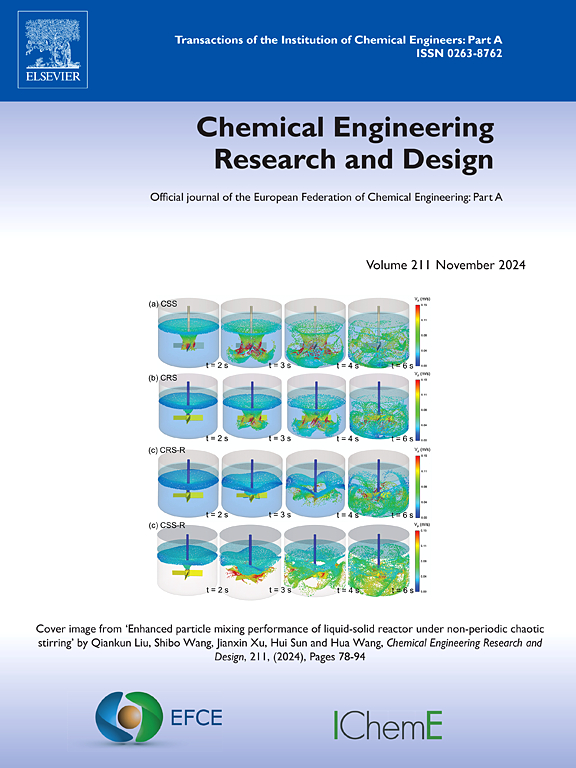Preparation of sulphide catalysts for heteroatom elimination in hydrocarbon refining
IF 3.7
3区 工程技术
Q2 ENGINEERING, CHEMICAL
引用次数: 0
Abstract
Sulphide catalysts containing Co, Ni, Mo and/or W catalyse hydrogenolysis of carbon sulphur/nitrogen/oxygen bonds and they are widely used in the hydrodesulphurization (HDS) of petroleum fractions. The HDS process produces H2S, which is subsequently partially oxidized to water and elemental sulphur in the Claus process. Nevertheless, this process can be overflowed with H2S. Sulphide catalysts are therefore investigated for the direct thermo-catalytic decomposition of H2S to form H2 and elemental sulphur. This work tailors on a novel and straightforward preparation method of the unsupported form of Co/MoS2, Ni/MoS2, Ni/WS2 and Ni/MoWS2 catalysts. The aqueous slurry of CoCO3.Co(OH)2 or 2NiCO3.3Ni(OH)2·4H2O reacts with MoS2, WS2 or MoS2+WS2 during milling in a planetary mill. After drying and re-sulphidation, the catalyst is characterised by its specific surface area (SBET), free sulphur vacancies (O2 up-take), crystalline size of molybdenite and/or tungstenite (DXRD), activity in thiophene (Th) and 4,6-dimethyldibenzothiophene (4,6DMDBT) HDS, and activity in thermo-catalytic decomposition of H2S. We concluded that the prepared catalysts are active in Th and 4,6DMDBT hydrodesulphurization, and thermo-catalytic decomposition of H2S. The Ni/WS2 is the most active in all reactions and also the most selective to direct desulphurization (DDS) during the 4,6DMDBT HDS. WS2 best suits the studied preparation method.
求助全文
约1分钟内获得全文
求助全文
来源期刊

Chemical Engineering Research & Design
工程技术-工程:化工
CiteScore
6.10
自引率
7.70%
发文量
623
审稿时长
42 days
期刊介绍:
ChERD aims to be the principal international journal for publication of high quality, original papers in chemical engineering.
Papers showing how research results can be used in chemical engineering design, and accounts of experimental or theoretical research work bringing new perspectives to established principles, highlighting unsolved problems or indicating directions for future research, are particularly welcome. Contributions that deal with new developments in plant or processes and that can be given quantitative expression are encouraged. The journal is especially interested in papers that extend the boundaries of traditional chemical engineering.
 求助内容:
求助内容: 应助结果提醒方式:
应助结果提醒方式:


